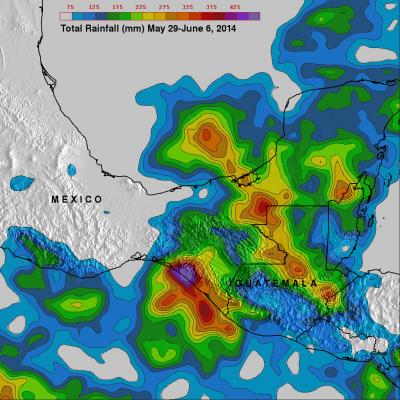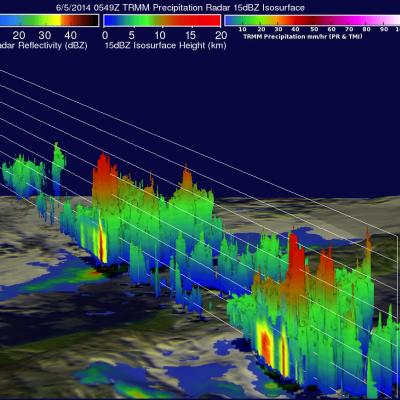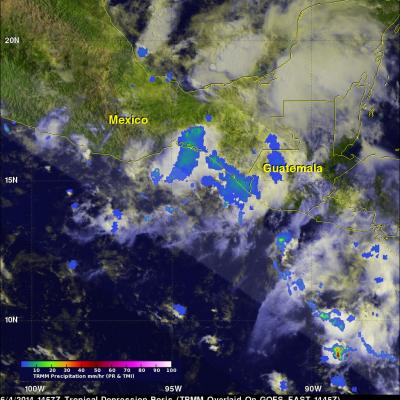Heavy Rainfall For Mexico & Central America
The movement of tropical storm Boris into southern Mexico and a nearly stationary low pressure system in the southern Gulf Of Mexico has been causing heavy rainfall in that area. The TRMM-based, near-real time Multi-satellite Precipitation Analysis (TMPA) at the NASA Goddard Space Flight Center monitors rainfall over the global Tropics. TMPA rainfall totals are shown here for the period May 29 to June 6, 2014. The highest rainfall totals of over 535 mm were analyzed where tropical storm Boris came ashore in southern Mexico. The slow moving low pressure center in the Bay Of Campeche is




